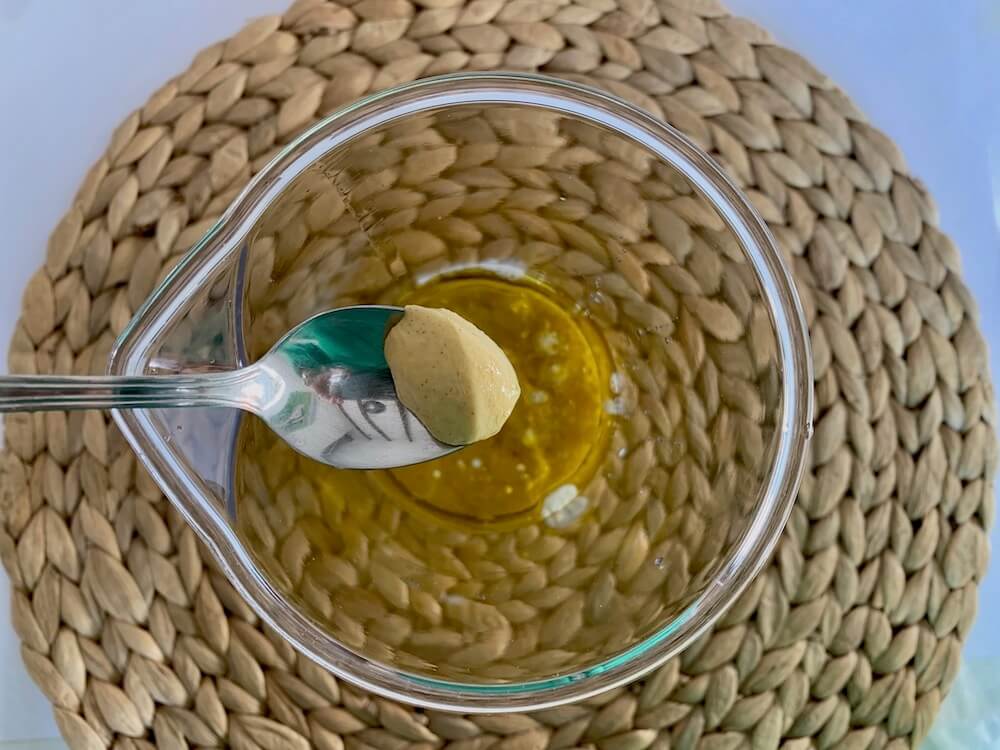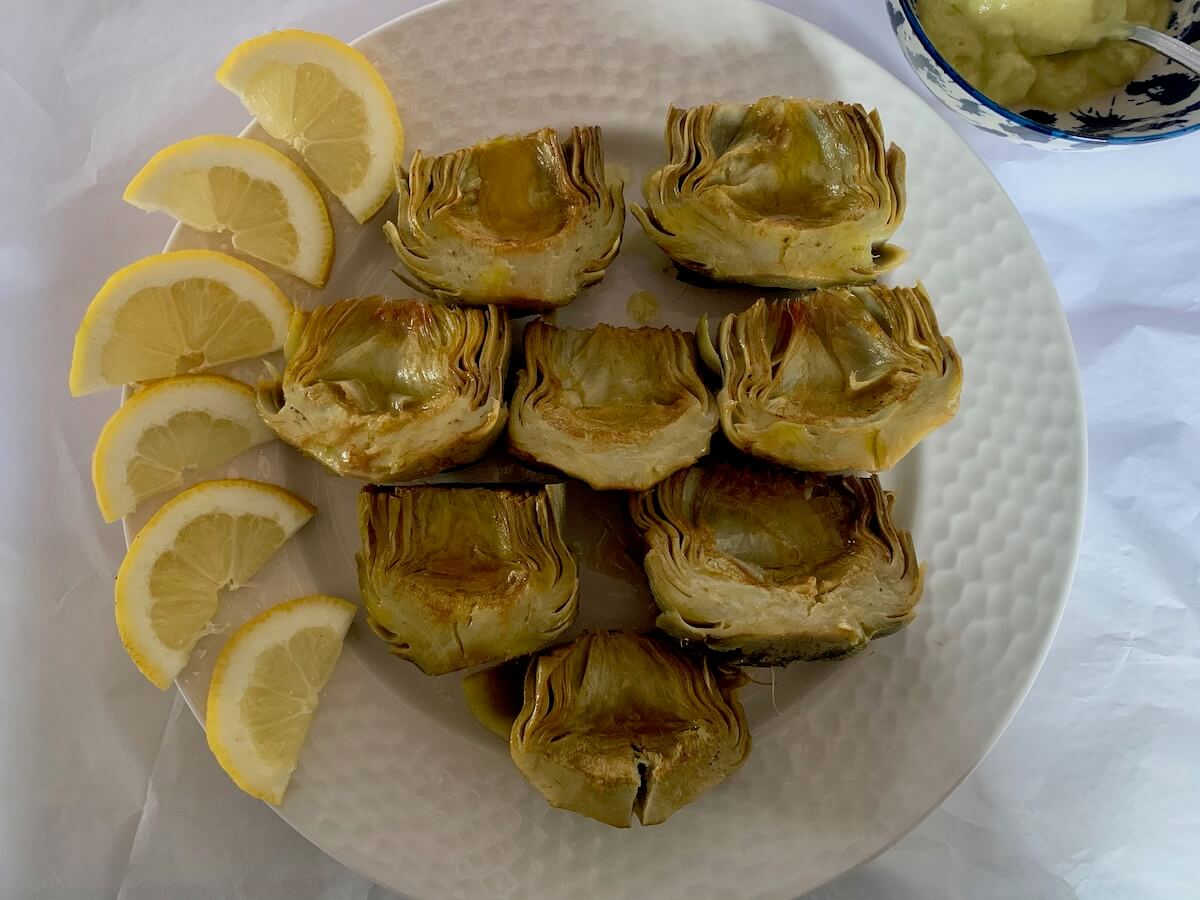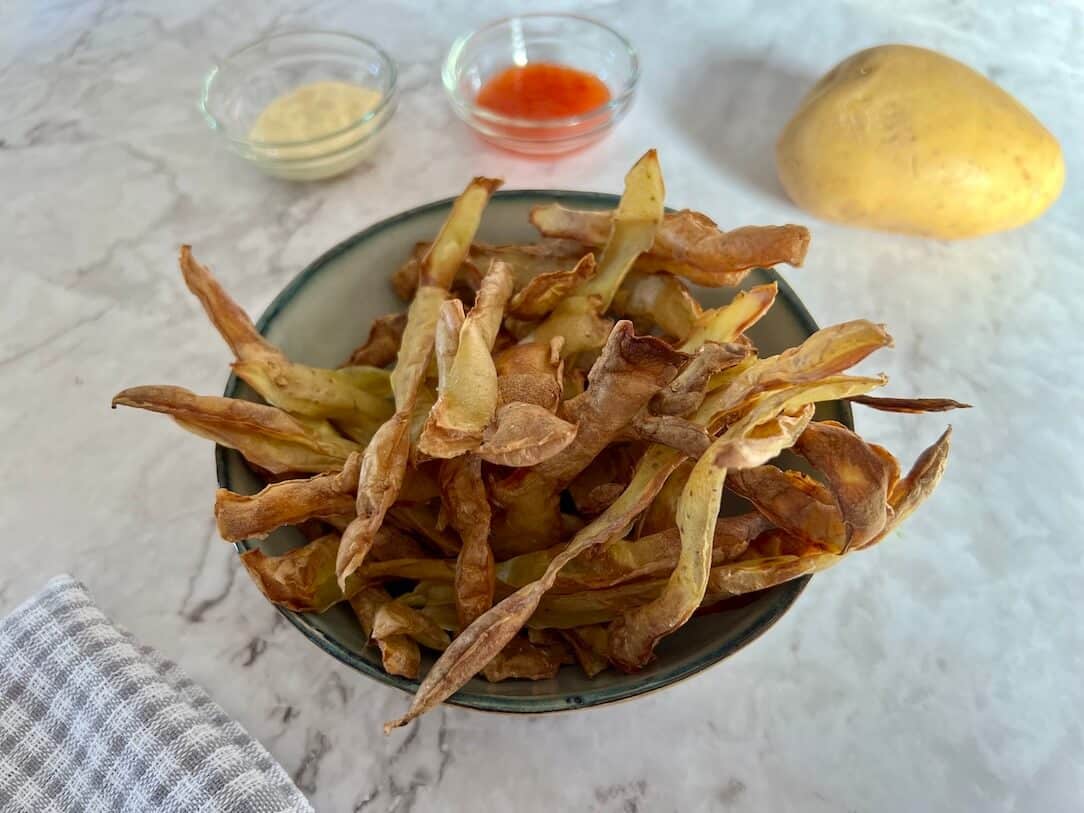When you first learn how to make vegan mayonnaise, you might be surprised to find that it isn’t as difficult as you’d thought.
In fact it’s simple.
A piece of proverbial cake.
In the past I had wanted to make vegan mayonnaise, but I had it in my head that it was a bit of a to-do. I’d say to myself, one day I’ll do it – but that day kept being mañana because I thought it would be a pain.
And then, one day I did it.
I made vegan mayonnaise and realised just how easy it is.
By the way, you may also wonder about other dairy replacements, like how to use vegan cheeses in your daily life. And if you fancy a tasty cheese for eating on cheese crackers, check out this vegan cashew cheese with jalapeños.
One of the easiest of all vegan cheeses is definitely the vegan mozzarella being beaten in easiness only by the simple vegan parmesan recipe which requires no cooking.
Table of Contents
Whole Foods Plant Based Diet
Since originally writing this article on how to make vegan mayonnaise I’ve really embraced the whole foods plant based way of eating. At first I just became WFPB little by little. It was kind of natural as I already didn’t really eat much in the way of processed foods.
But as I became more interested and it all began to make more sense to me, I eventually cut out olive oil (or any oil) from my cooking.
I do actually still eat mayonnaise occasionally and I sometimes use raw olive oil, like drizzled on top of a silky smooth oil free hummus for example.
But more often than not, my go-to sauce is cashew nut sauce, which is both wfpb and oil free.
Method of How to Make Vegan Mayonnaise
Vegan mayonnaise is an emulsion between oil, plant milk and a little bit of acid, like lemon juice, or a white vinegar, or both. Other ingredients are just for flavour – it’s the blending of those three essential ingredients that creates what we recognise as a mayonnaise.
Basically, when you want to make homemade mayonnaise, all you need to do is get your head round how easy it is and just go ahead and do it.
Because it is easy, and procrastination is the biggest negative-influencer to stop this from happening.

It’s Easy to Learn How to Make Vegan Mayonnaise
If you speak to people who used to make mayonnaise in the past, the oil had to be very carefully drizzled into the milk – and even so, sometimes the mayonnaise wouldn’t actually emulsify and had to be thrown away, only to start all over again (or use remedies – see troubleshooting below).
But these days, well, let’s just say that things have changed . . .
With our fancy new kitchen appliances (aka bog standard hand blender), we can put everything in a jar all at one time, all together. Yes. Exactly. Much easier!
Put all the ingredients into the blending container, or straight into the jar where you plan to keep the mayonnaise, as long as the blender fits into the top, and place the blender into the mixture at the bottom.
Now, the important part . . . are you listening? The important, no essential part, is to hold the blender vertically into the mixture and place the bottom on the bottom of the container.
Now, just switch it on! Don’t move it at all. Hold it vertical without moving and just blend.
The mayonnaise will appear before your very eyes! And if you find there’s a touch of oil left on the top, then you can move the blender upwards so that the last drop of oil gets blended in. But in the first instance, the blender stays put in a vertical position.
Hey Presto! Vegan Mayonnaise appears!
How to Make Vegan Mayonnaise – Ingredients Overview
The most important thing about making vegan mayonnaise, or any mayonnaise come to that, is that it has a ratio of 1 measure of plant milk to 2 measures of oil, or 1/2 a measure plant milk to 1 measure oil, plus either lemon juice or white vinegar for the acid ingredient.
With those three ingredients the mayonnaise will emulsify but there are a few other things which you can add for flavouring.




How to Make Vegan Mayonnaise – Additional Ingredients
So what about the extra ingredients? Well, a good pinch of salt is normal in my household, though my mum makes it salt free and hers is absolutely delicious.
As well as that you can add half a teaspoon of mustard to give it a bit of a depth. And you can also add a dash of soy sauce or sweet soy sauce (kecap manis) if you think it needs improving.
For a touch of yellow colour, sprinkle in some turmeric. And of course, if you like you can add a hint of garlic, but not too much in my opinion, or it overpowers the flavour.
I’ve read recipes where they add maple syrup to the mayonnaise mix, but as a rule I choose not to add sweetness to things, especially if it isn’t essential – so I haven’t used maple syrup in mayonnaise.
Best Oil for Making Vegan Mayonnaise
The best oil for making vegan mayonnaise, taste wise, is sunflower oil because of its flavourless character. It gives the mayonnaise that blandness that goes well with almost every food out there! And apart from making a lighter mayonnaise, it’s also whiter in colour, which can look more attractive.
However, if you go for sunflower oil or canola oil or vegetable oil you aren’t choosing the healthiest oil out there. So choosing the best oil for making vegan mayonnaise will depend a bit on your personal preference and which oil you feel fine eating.
Remember the oil you choose will have a direct impact on the flavour of your mayonnaise. The best way to know is to try with various oils. I made two mayonnaises with two different olive oils and they had a significantly different flavour, the lighter oil always making for the better mayonnaise taste.
I am a diehard olive oil fan, so I still use olive oil for my vegan mayonnaise but really, to be honest, you’ll probably prefer the flavour of a less powerful tasting oil.
- Sunflower or vegetable oil – the best for a clean flavour but perhaps not the healthiest choice. But then again, mayonnaise isn’t really the healthiest of foods in the first place, so you may choose to favour flavour over health benefits here?
- Extra virgin olive oil – most people think it can be too overpowering but a lighter version can be fine. I just prefer using olive oil for everything, but the flavour, I must confess is a little heavy.
- Coconut oil – normally one of my favourite oils but quite pricey for mayonnaise. You can use a bit of coconut oil in your homemade mayonnaise along with another oil
- Avocado oil – again, expensive for mayonnaise and it makes a heavy mayonnaise, but can work well if you use it in part. It will add a yellow colour to the mayonnaise.

How to Make Vegan Mayonnaise – Best Plant Milk
It’s vital that the plant milk you use isn’t sweetened. Where I live, almost all the plant milks used to be sweet, even when they had ‘No Added Sugar‘ plastered across the front of the carton.
Because of that, I always used soy milk as it’s the only one I could get easily which was 100% pure without any additives.
But nowadays we can get any kind of sugar free plant milks, so there’s plenty of choice.
As long as you buy pure, organic plant milk, there are lots of choices available for you. Almond milk, cashew milk and soy milk would be in the top three.
Best Homemade Vegan Mayonnaise Recipe
Is there one, simple, best vegan mayonnaise recipe? I don’t think there is. You’ll get delicious mayonnaise time and time again, but they won’t always taste identical!
The taste definitely varies and there are clearly better flavours and worse flavours but the exact ‘best’ vegan mayonnaise would have to be all those times when your 10 minutes in the kitchen pay off the most!
Some people love garlic in their mayonnaise. To me then it becomes alioli, not mayonnaise! And personally I’m not a fan of alioli.
Vegan Mayonnaise Ingredients

Ingredients:
- 1 measure oil
- 1/2 measure unsweetened plant milk
- 1 (tablespoon) lemon juice
- 1 (tablespoon) apple cider vinegar or white wine vinegar
- Salt to taste
Optional additional ingredients to tweak to your taste:
- 1/4 teaspoon of dijon mustard
- soy sauce
- sweet soy sauce
- touch of garlic
- nutritional yeast (for emergencies!)
How to Make Vegan Mayonnaise – Troubleshooting
Emulsifying
If you keep the blender upright, on a high speed and without moving, you shouldn’t run into any problems with emulsifying.
But, if the mayonnaise mix separates instead of blending, you can try to regain the mayonnaise by blending again with a couple of teaspoons of water.
Too Thin Consistency
Use the trickle method to add more oil to the mix while the blender’s still running. If you don’t want to add more oil, you could change the mayonnaise completely by adding some ground cashews or nutritional yeast but these will of course, change the flavour considerably.
Flavour of Homemade Vegan Mayonnaise
When you’ve blended the mayonnaise and tasted it, if it isn’t exactly how you want it you can still add things to it to tweak the flavour.
If it’s a bit too sharp, you can add soy sauce, sweet soy sauce, nutritional yeast, yeast extract or ground cashews.
If it lacks character it might need more lemon juice – add an extra squirt and taste again.
You can also add herbs like fresh chopped fresh parsley or other herb of your choice.
Storage of Vegan Mayonnaise
Keep the vegan mayonnaise in a sealed jar in the fridge. It might get a bit of liquid separating from the mayonnaise, but it’s nothing to worry about, just stir the mayonnaise and enjoy.
You can keep the vegan mayonnaise in the fridge for a few days. Remember, it’s so easy to make it’s better to make a small quantity and use it in a couple of days rather than try to keep it for too long.
Quantity to Make
The less quantity the better so that you always get to eat it fresh but the amount you blend should be enough to cover the head of the blender or it might not emulsify properly.
Is Homemade Vegan Mayonnaise Healthy?
Shop bought mayonnaise can be full of additives so homemade mayonnaise is naturally much healthier option that commercially produced ones.
But that doesn’t make it a healthy food. Much healthier would be to eat a healthy homemade cashew sauce, which you can make plain or with more vinegar to substitute a sour cream, or with herbs like basil or cilantro to give it a different flavour.
In essence mayonnaise is high in oil. So while homemade vegan mayonnaise is the best way to eat mayonnaise, it’s very high in calories and low in nutritional value, so it isn’t something to eat every day.
Eat in moderation and enjoy!
Oil Free Alternatives to Vegan Mayonnaise
If you’re thinking of adopting a whole foods plant based diet, or maybe you want to go oil free to keep down the calories, then you need to find an alternative to mayonnaise.
Although it doesn’t take like mayonnaise, I’ve found that I can substitute mayonnaise perfectly by making a cashew nut sauce or an absolutely delicious fresh cilantro sauce or fresh basil for variation.
Another alternative is to emulsify plant milk with a dash of apple vinegar and then add a spoon full of tahini for an unusual but tasty, oil free tahini sauce.
There are so many essential plant based sauces available which are easy to make, that mayonnaise, as easy as it it, is no longer a requirement in my kitchen.
Conclusion
Homemade vegan mayonnaise is one of the best discoveries you can make when you first go vegan and you’re missing the traditional mayonnaise.
And almost everyone thinks it’s a hassle to make when the truth is it’s absolutely the opposite.
Easy to make, delicious and (relatively) healthy!
If you make vegan mayonnaise, how do you like it best? What ingredients do you use? Have you ever had any problems making vegan mayonnaise?









Wow! That was so intensive and interesting!
Thank you.
I’m so glad you liked it and found it interesting! Thank you! 🙂